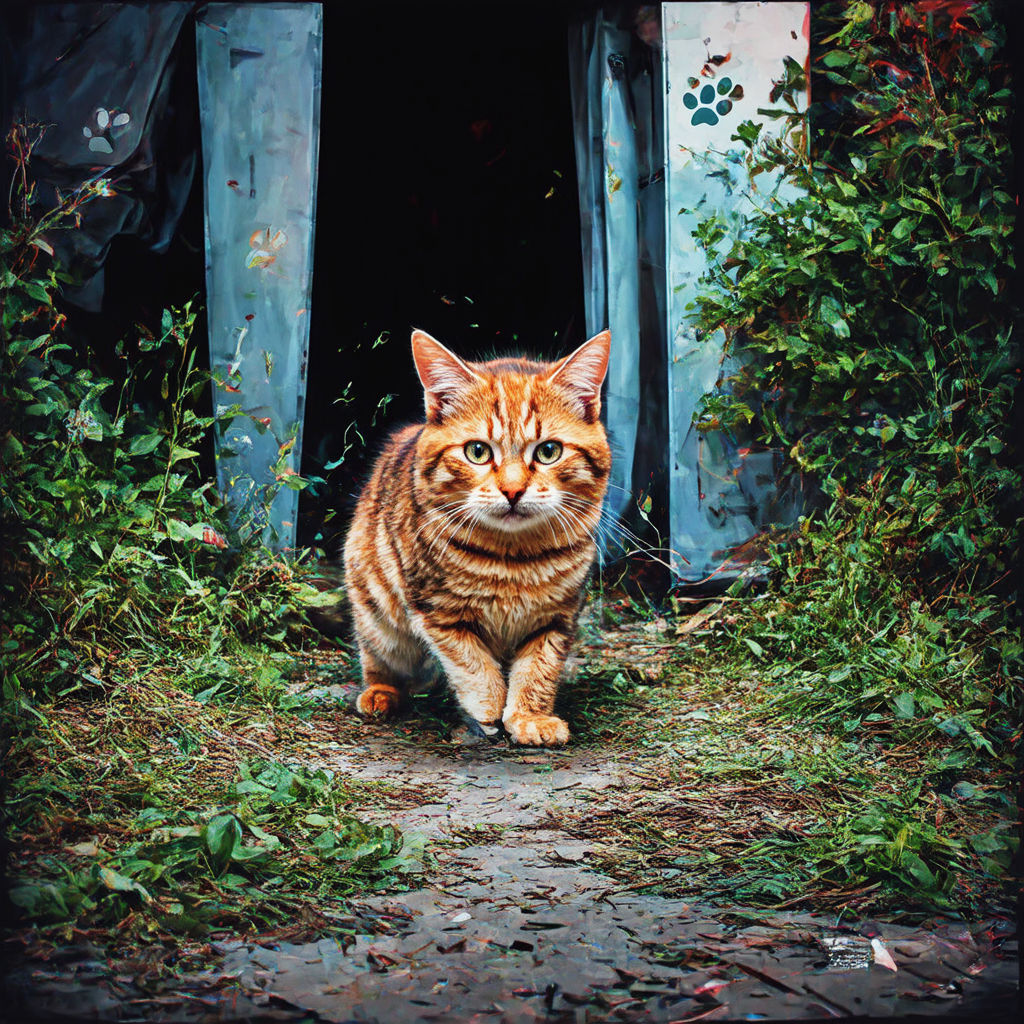Key Takeaways
- Understanding Feral Cats: Feral cats are unsocialized and adapted to living outdoors, making them distinct from stray cats.
- Behavioral Insights: Feral cats exhibit wild behaviors and require significant patience for any potential socialization.
- Community Solutions: Engage with local animal welfare organizations for effective management strategies like Trap-Neuter-Return (TNR) programs.
- Shelter Provision: Building DIY shelters can provide vital protection for feral cats, especially during harsh weather conditions.
- Health Awareness: Feral cats may carry diseases; it’s essential to approach them with caution and consider professional assistance for handling.
Understanding feral cats is essential for anyone interested in animal welfare and community ecology. A feral cat, often misunderstood, is not merely a stray cat but rather a feline that has had little to no human interaction, leading to distinct behaviors and needs. In this article, we will delve into the definition of feral cat, explore the differences between feral and stray cats, and discuss whether it is appropriate to take in a feral cat. We will also address the potential dangers feral cats pose, how to identify signs that a feral cat trusts you, and what steps to take if you encounter one. Additionally, we will provide insights into effective feral cat shelter options, including DIY solutions for winter shelters, and highlight various rescue initiatives aimed at helping these animals. Join us as we uncover the complexities of feral cats and learn how to provide them with the care they need.
What Does It Mean If a Cat Is Feral?
Understanding what a feral cat means is essential for anyone interested in feline welfare. A feral cat is a domestic cat that has reverted to a wild state, often due to abandonment or being lost. These cats typically live outdoors and have developed survival skills that allow them to thrive independently. They are characterized by their unsocialized behavior, wild instincts, and preference for living in colonies. This section will delve deeper into the definition of feral cats and the distinctions between feral and stray cats.
Definition of Feral Cat
Feral cats are defined by several key characteristics that distinguish them from domesticated or stray cats:
- Unsocialized Behavior: Feral cats have experienced minimal to no positive interactions with humans during their formative kittenhood. This lack of socialization leads to a natural wariness of people, causing them to avoid human contact whenever possible.
- Wild Behavior: Their behaviors closely resemble those of wild felines. Feral cats are often skittish, quick to flee from perceived threats, and typically prefer to live in colonies or groups, which is a survival strategy that allows them to share resources and protect one another.
- Survival Skills: Adapted to life outdoors, feral cats rely on their instincts to survive. They scavenge for food and seek shelter in various environments, showcasing their ability to thrive independently without human assistance.
- Distinction from Stray Cats: Unlike feral cats, stray cats are former pets that have become lost or abandoned. While strays may exhibit fear towards humans, they are generally more socialized and can often be reintroduced to domestic life more easily than feral cats.
- Reversion to Wild State: Feral cats are essentially domestic cats that have reverted to a wild state, often due to abandonment or being lost. This reversion can occur quickly, as their survival instincts take precedence over their domesticated behaviors.
- Challenges in Socialization: While some feral cats may eventually adapt to human companionship, the process is challenging and often requires significant time and patience. Many feral cats are best suited to remain in their natural outdoor environments, where they can live according to their instincts.
Understanding the nature of feral cats is crucial for effective management and care. Organizations focused on animal welfare often implement Trap-Neuter-Return (TNR) programs to help control feral cat populations humanely. For further insights into feral cat behavior and management strategies, resources from the American Society for the Prevention of Cruelty to Animals (ASPCA) and the Humane Society of the United States provide valuable information.
Feral Cat Meaning
The term “feral cat” encompasses more than just a definition; it reflects a complex relationship between humans and cats. Feral cats are often misunderstood, leading to misconceptions about their behavior and needs. Understanding the feral cat meaning involves recognizing their role in the ecosystem and the challenges they face in urban environments.
Feral cats contribute to controlling rodent populations, which can be beneficial in certain settings. However, they also face numerous threats, including food scarcity, harsh weather conditions, and human intervention. Providing appropriate shelter for feral cats is essential, especially in winter months, to ensure their survival. Options such as DIY feral cat shelters can offer protection from the elements and create a safe space for these resilient animals.

Is it OK to take in a feral cat?
Understanding whether it is appropriate to take in a feral cat requires careful consideration of their unique needs and behaviors. Feral cats are typically not socialized to humans, making them unsuitable for adoption as pets. Bringing a feral cat into your home can lead to significant challenges, both for the cat and the household. Here are key considerations regarding feral cats:
- Behavioral Challenges: Feral cats often exhibit fearful and aggressive behaviors towards humans. They are not accustomed to indoor living, which can lead to stress and anxiety for both the cat and the owner.
- Health Risks: Feral cats may carry diseases such as feline leukemia virus (FeLV) and feline immunodeficiency virus (FIV). Introducing a feral cat to your home can pose health risks to other pets and humans.
- Shelter Limitations: Most animal shelters are not equipped to handle feral cats. When taken to a shelter, feral cats often face euthanasia due to their unadoptable nature. Instead, consider supporting local TNR (Trap-Neuter-Return) programs that help manage feral cat populations humanely.
- Outdoor Living: Feral cats are adapted to outdoor life. They thrive in their natural environment where they can hunt and establish territories. Providing outdoor shelters can help them stay safe and healthy without bringing them into a home setting.
- Community Support: Engaging with local animal welfare organizations can provide resources and support for managing feral cat colonies. Programs often include feeding stations, spay/neuter initiatives, and education on responsible cat care.
For more information on the humane treatment of feral cats, refer to resources from Alley Cat Allies and the ASPCA. These organizations provide valuable insights into the best practices for managing feral cat populations while ensuring their welfare.
Feral cat vs stray cat
Understanding the difference between feral cats and stray cats is crucial for effective management and care. While both types of cats may be found outdoors, their behaviors and socialization levels differ significantly:
- Socialization: Stray cats are typically lost or abandoned pets that have had some human interaction, making them more likely to be friendly and approachable. In contrast, feral cats are born and raised without human contact, leading to their fearful and evasive nature.
- Living Conditions: Stray cats may seek shelter in homes or garages, while feral cats prefer to live in colonies outdoors, where they can hunt and establish territories.
- Adoption Potential: Stray cats can often be socialized and adopted into homes, whereas feral cats are usually not suitable for domestication due to their lack of socialization.
Recognizing these differences can help in determining the best approach for caring for each type of cat, whether it involves finding a shelter for cats in winter or supporting local TNR programs.
Can a Feral Cat Be Domesticated?
Understanding the process of domesticating a feral cat is essential for anyone considering bringing one into their home. Feral cats, defined as those that have never been socialized with humans, often exhibit wild and fearful behaviors. In contrast, stray cats are domestic cats that have been lost or abandoned, retaining some socialization skills. This distinction is crucial when evaluating the potential for domestication.
Age Considerations
Socializing kittens is generally more successful than adult feral cats. Kittens, particularly those under 8 weeks old, are more adaptable and can often be socialized into friendly companions. Research indicates that early socialization is key to developing a well-adjusted pet. For adult feral cats, the process can be more challenging and may require significant time and patience.
Utilizing Food as a Trust-Building Tool
Food can be an effective means of gaining a feral cat’s trust. Gradually introducing food in a safe environment can encourage the cat to approach you. Studies show that positive reinforcement through treats can enhance the socialization process. Starting slowly and creating a calm atmosphere is vital for building trust. Providing a safe space with food, water, and a litter box allows the cat to acclimate at its own pace, which is essential for successful domestication.
What do I do if I see a feral cat?
Seeing a feral cat can be a surprising experience, and knowing how to respond is essential for both your safety and the well-being of the cat. Understanding what a feral cat is and how to approach the situation can make a significant difference.
What is a feral cat?
A feral cat is a domestic cat (Felis catus) that has reverted to a wild state, often living in colonies without human interaction. Unlike stray cats, which may have once been pets and are more accustomed to human contact, feral cats typically avoid people and can be wary or aggressive. The definition of feral cat emphasizes their independence and survival instincts, which can make them difficult to approach or handle. If you encounter a feral cat, it’s crucial to respect its space and understand its behavior.
How to catch a feral cat
Catching a feral cat requires careful planning and the right tools. Here are some effective strategies:
1. **Use a Live Trap**: Invest in a humane live trap designed for cats. These traps are safe and allow you to capture the cat without causing harm. Place the trap in an area where the cat frequents, using bait such as tuna or wet cat food to entice it inside.
2. **Set the Trap Properly**: Ensure the trap is stable and secure. Follow the manufacturer’s instructions for setting it up. Make sure to check the trap frequently to avoid leaving the cat inside for too long.
3. **Be Patient**: Feral cats can be cautious, so it may take time for them to enter the trap. Avoid startling the cat and give it space to feel comfortable approaching the bait.
4. **Consider Professional Help**: If you’re unsure about how to proceed, consider reaching out to local feral cat organizations or shelters. They often have experienced feral cat trappers who can assist you in safely capturing the cat.
5. **Plan for After Capture**: Once you have caught the feral cat, it’s important to have a plan for its care. This may include spaying or neutering through a feral cat spay and neuter program, or finding a suitable feral cat shelter where it can live safely.
By following these steps, you can help manage the feral cat population responsibly while ensuring the safety of both the cat and your community. For more information on feral cat management, you can visit the [Feral Cat Coalition](https://www.feralcatcoalition.org/) for resources and support.

What do I do if I see a feral cat?
If you encounter a feral cat, it’s important to approach the situation with care and consideration for both the animal and your safety. Here are steps you can take:
- Assess the Situation: Observe the cat from a distance to determine if it appears injured, sick, or in distress. Feral cats can be wary of humans, so it’s crucial to approach slowly and quietly.
- Do Not Attempt to Handle: Avoid trying to touch or grab the cat, as this can lead to bites or scratches. Feral cats are not accustomed to human interaction and may react defensively.
- Provide Food and Water: If you feel comfortable, you can leave food and water nearby to help the cat. Dry cat food and fresh water can be beneficial, especially if the cat appears malnourished.
- Use a Humane Trap: If you need to capture the cat for its safety or to take it to a veterinarian, consider using a humane trap. These traps are designed to safely contain the animal without causing harm. You can often borrow one from local animal shelters or rescue organizations.
- Check for a Microchip: Once captured, take the cat to a veterinarian or animal shelter to check for a microchip. This can help reunite the cat with its owner if it is lost. Many shelters have the necessary equipment to scan for microchips.
- Contact Local Rescue Groups: Reach out to local animal rescue organizations for assistance. They can provide guidance on the best course of action and may offer resources for spaying/neutering and vaccinations.
- Consider TNR Programs: If the cat is feral and not adoptable, inquire about Trap-Neuter-Return (TNR) programs in your area. TNR helps manage feral cat populations humanely by spaying or neutering them and returning them to their territory.
- Educate Yourself: Understanding feral cat behavior and welfare can help you make informed decisions. Resources from organizations like the Humane Society can provide valuable insights into how to help feral cats effectively.
How to catch a feral cat
Catching a feral cat requires patience and the right tools. Here are effective methods to safely trap a feral cat:
- Choose the Right Trap: Use a humane trap specifically designed for cats. These traps are safe and effective for capturing feral cats without causing harm.
- Set the Trap Properly: Place the trap in an area where the feral cat is known to frequent. Bait the trap with enticing food, such as tuna or wet cat food, to lure the cat inside.
- Monitor the Trap: Check the trap frequently to ensure the cat is not left inside for too long. This helps reduce stress for the animal.
- Cover the Trap: Once the cat is trapped, cover the trap with a blanket or towel to help calm the cat and reduce its stress.
- Transport Safely: Take the trapped cat to a veterinarian or animal shelter as soon as possible for evaluation and care.
By following these steps, you can ensure the safety and well-being of the feral cat while also protecting yourself. For more detailed information on feral cat management and welfare, refer to the Humane Society’s guidelines and local animal control resources.
Why Are Feral Cats So Bad?
Feral cats pose significant challenges to ecosystems and human communities due to several factors. Understanding these issues is crucial for addressing the feral cat problem effectively.
Feral Cat Problem in Australia
In Australia, feral cats are a major environmental concern. They are responsible for the decline of native wildlife, particularly birds and small mammals. The Australian government has recognized feral cats as one of the top threats to biodiversity. Research indicates that feral cats kill millions of native animals each year, contributing to the extinction of several species (Loss, S. R., Will, T., & Marra, P. P. 2013). This predation disrupts local ecosystems and poses a significant challenge for conservation efforts.
Moreover, feral cats compete with native predators for food resources, leading to decreased populations of vulnerable species. This competition can upset the ecological balance, making it essential to implement effective management strategies, such as spay and neuter programs, to control feral cat populations while protecting native wildlife.
Feral Cat Spay and Neuter
Spaying and neutering feral cats is a critical component of managing their populations. Programs like trap-neuter-return (TNR) have been adopted in various communities to help stabilize feral cat numbers. These initiatives involve capturing feral cats, spaying or neutering them, and then returning them to their original locations. While TNR can reduce the number of kittens born into feral populations, it does not eliminate the predation threat to wildlife.
Organizations such as the Feral Cat Coalition and the Feral Cat Alliance advocate for these programs, emphasizing the importance of humane treatment for feral cats while addressing the ecological impacts they create. By focusing on spay and neuter efforts, communities can work towards a more balanced coexistence with feral cats, ultimately benefiting both the cats and local wildlife. For more information on feral cat initiatives, you can visit the [Feral Cat Coalition](https://www.feralcatcoalition.org/) and the [Feral Cat Alliance](https://www.feralcatalliance.org/).
Feral Cat Rescue Initiatives
Feral cat rescue initiatives play a crucial role in managing the population of feral cats and ensuring their well-being. These programs focus on humane methods to control feral cat populations, primarily through spay and neuter efforts, as well as providing shelter and food. Organizations like the Feral Cat Alliance and Feral Cat Coalition are dedicated to these efforts, working tirelessly to improve the lives of feral cats and reduce their numbers in communities.
Feral Cat Alliance
The Feral Cat Alliance is a prominent organization that focuses on the welfare of feral cats. They provide resources for communities to implement effective feral cat management strategies, including Trap-Neuter-Return (TNR) programs. TNR is essential as it helps prevent the birth of new feral kittens, ultimately reducing the feral cat population over time. The alliance also offers educational materials to inform the public about the importance of feral cat care and management.
Feral Cat Organizations
Various feral cat organizations across the country work to support feral cat populations through rescue and rehabilitation. These organizations often collaborate with local shelters and veterinary clinics to provide spay/neuter services and create outdoor cat shelters. By fostering partnerships with community members, they aim to create a sustainable environment for feral cats, ensuring they receive the care they need while living in their natural habitats.












